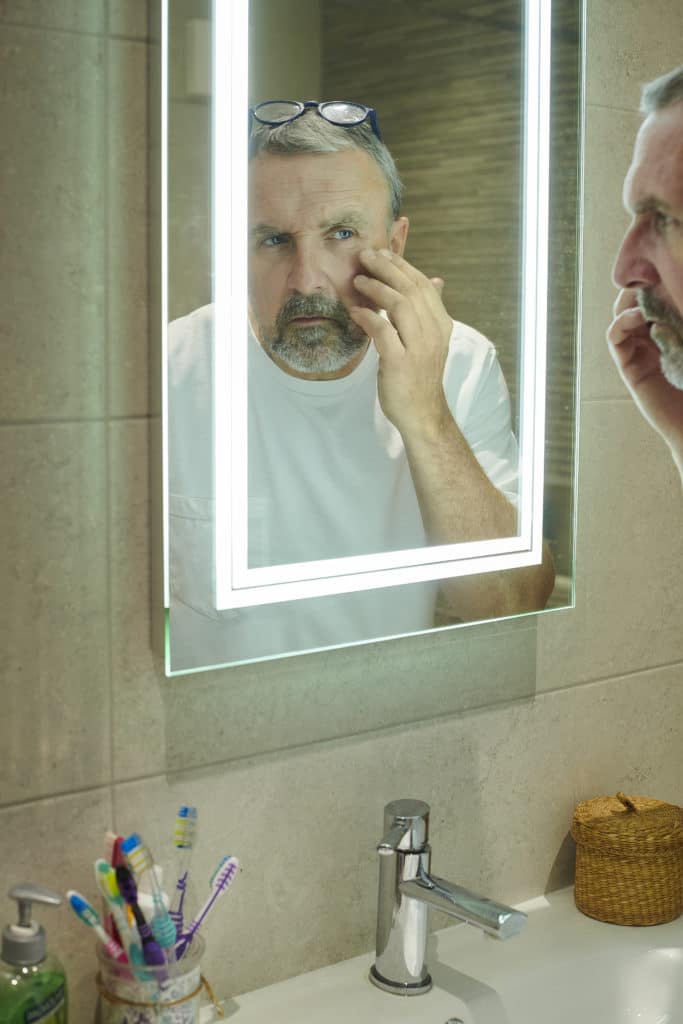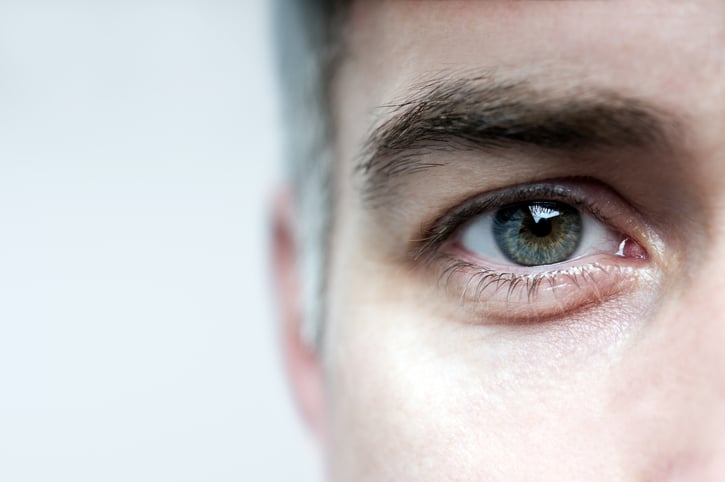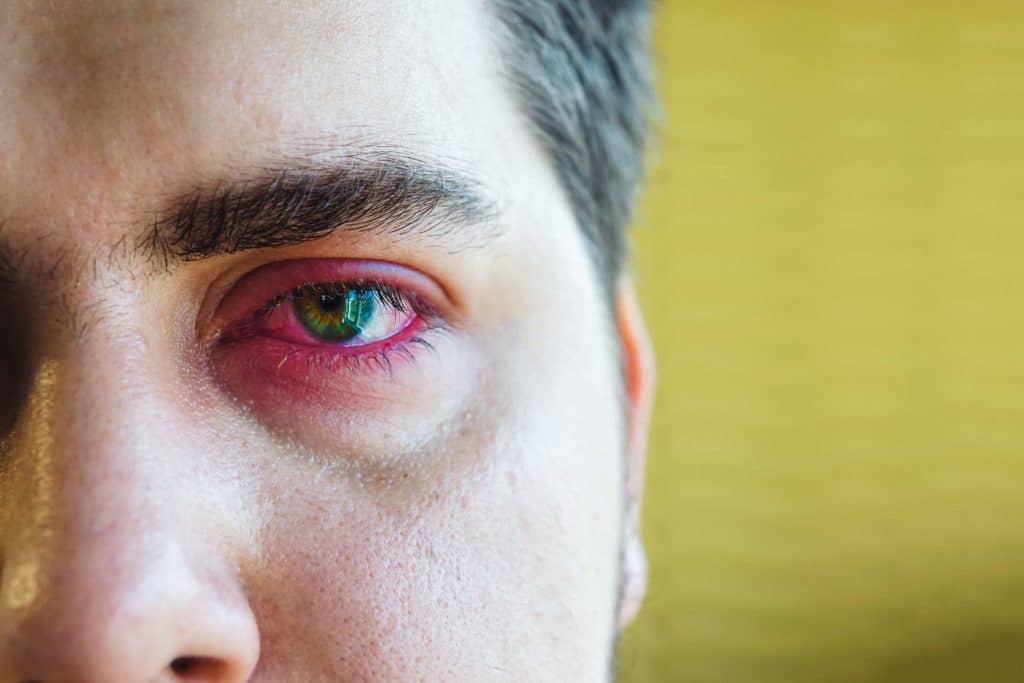Blepharitis Treatment
in Jacksonville, FL
What is Blepharitis?
Blepharitis is an inflammation of the eyelids causing red, irritated, and itchy eyelids. It can also cause the formation of dandruff-like scales on eyelashes. It is a common eye disorder caused by either bacterial or a skin condition such as dandruff of the scalp or acne rosacea. It affects people of all ages. Although uncomfortable, blepharitis is not contagious and generally does not cause any permanent damage to eyesight.
Causes of Blepharitis
Blepharitis commonly occurs when tiny oil glands near the base of the eyelashes become clogged. This causes irritation and redness.
The exact reason this happens isn’t clear. Blepharitis has been associated with any of these issues:
- Infections
- Seborrheic dermatitis (of the scalp and eyebrows)
- Clogged or malfunctioning oil glands in the eyelids
- Rosacea
- Allergies, including allergic reactions to eye medications, contact lens solutions, or eye makeup
- Eyelash mites or lice
- Dry eye
Can Blepharitis Heal On Its Own?

What Are The Types of Blepharitis?
- Anterior blepharitis occurs at the outside front edge of the eyelid where the eyelashes are attached.
- Posterior blepharitis affects the inner edge of the eyelid that comes in contact with the eyeball.
What Are The Signs And Symptoms of Blepharitis?
Individuals with blepharitis may experience:
- Gritty or burning sensation in their eyes
- Excessive tearing
- Itching
- Red and swollen eyelids
- Dry eyes
- Crusting of the eyelids.
For some people, blepharitis causes only minor irritation and itching. However, it can lead to more severe signs and symptoms such as blurring of vision, missing or misdirected eyelashes, and inflammation of the cornea.
How To Relieve Blepharitis Symptoms
In many cases, good eyelid hygiene and a regular cleaning routine can control blepharitis. This includes frequent scalp and face washing, using warm compresses to soak the eyelids, and doing eyelid scrubs. In cases where a bacterial infection is a cause, various antibiotics and other medications may be prescribed along with eyelid hygiene.
How is Blepharitis Treated?
Treatment depends on the type of blepharitis. The key to treating most types of blepharitis is keeping the lids clean and free of crusts. Limiting or stopping the use of eye makeup when treating blepharitis is often recommended, as its use will make lid hygiene more difficult.
- Warm compresses can be applied to loosen the crusts, followed by gentle scrubbing of the eyes with a mixture of water and baby shampoo or an over-the-counter lid cleansing product. In cases involving bacterial infection, an antibiotic may also be prescribed.
- If the glands in the eyelids are blocked, the eyelids may need to be massaged to clean out oil accumulated in the eyelid glands.
- Artificial tear solutions or lubricating ointments may be prescribed in some cases.
- Use of an anti-dandruff shampoo on the scalp can help.
- If you wear contact lenses, you may have to temporarily discontinue wearing them during treatment.
Dr. Robert Schnipper at Jacksonville Eye Center is pleased to offer advanced technology in the treatment of blepharitis.
What Our Patients Say
“Everyone in the office is helpful! Dr Schnipper is wonderful to work with! Would highly recommend his practice to anyone!” – Tyler B.
BlephEx® Treatment For Blepharitis
BlephEx® is a painless in-office procedure performed at Jacksonville Eye Center. A revolutionary new patented BlephEx® handpiece is used to very precisely and carefully spin a medical grade micro-sponge along the edge of your eyelids and lashes, removing scurf and debris and exfoliating your eyelids. The patented micro-sponge is disposable and a clean one is used for each individual eyelid so bacteria is not spread between the lids. The eyes are rinsed well after.
Benefits of BlephEx®
The problem with the inflammation and irritation with blepharitis is that it tends to be chronic. You can clean your eyelids and eyelashes, but it’s impossible to remove all of the bacteria and other debris that are causing your blepharitis. Any bacteria left in place then begin to start the inflammation process all over again.

These are comfortable, effective treatments that take just a few minutes. If you’re plagued with chronic blepharitis, you’ll love the changes in your eyelids after having BlephEx®. This is the only currently available clinical treatment for blepharitis.
BlephEx® Procedure

Once one eye is done, we micro-sponge is removed and replaced. This prevents passing bacteria from one eyelid to the other. We then repeat the process on the other eyelid. The eyes are rinsed and your BlephEx® treatment is complete.
The procedure lasts about 6 -8 minutes and is well tolerated.
What to Expect After Blephex®
After the procedure, the patient is instructed on how to maintain their clean eyelids with regular nightly lid hygiene. Since home treatments are only semi-effective, the procedure is typically repeated at 4-6 month intervals.
Some cases of blepharitis may require more complex treatment plans. Blepharitis seldom disappears completely. Even with successful treatment, relapses may occur.
Is BlephEx® Treatment Painful?
These are comfortable treatments. A numbing drop is usually placed in each eye prior to treatment for increased comfort. The micro-sponge that does the cleaning is soft, yet effective for removing the bacterial biofilm, debris, and excess oils that accumulate on our eyelids and eyelashes. Our patients at Jacksonville Eye Center equate the feeling to that of a tickling sensation. There isn’t any pain at all.
How Long Will Results Last After BlephEx®?
Everyone is different, but we see results from these treatments lasting from four to six months. At around that point, the bacteria and biofilm can rebuild to the extent that you may see your blepharitis recurring.
Side Effects of BlephEx®
These are completely non-invasive treatments. We handle the instrument and ensure it is positioned correctly. The micro-brush simply rotates and delivers much better cleaning than you could provide at home. These are virtually risk-free treatments that are effective for preventing or reducing the symptoms of blepharitis.
Schedule a Consultation
For more information about Blepharitis and treatment options, contact Jacksonville Eye Center. Call our office today at 904-355-5555 to schedule a consultation.


